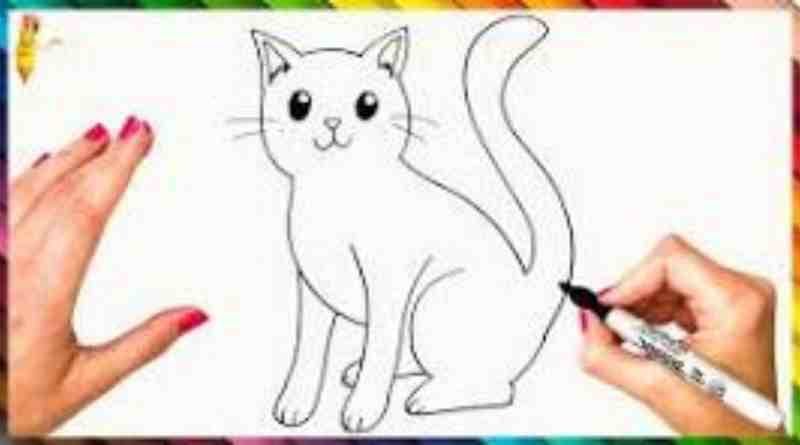Drawing: A4Z_-YMTKR8= Cat – The Ultimate Guide to Creating Unique Cat Art
Cats have been a favorite subject for artists for centuries. Their grace, mystery, and charm make them perfect muses for creative expression. In this guide, we will explore the unique approach to drawing cats, particularly through the lens of the “Drawing: A4Z_-YMTKR8= Cat” method. This method offers a structured yet flexible way to create stunning and unique cat drawings. Whether you are a beginner or an experienced artist, this comprehensive guide will provide you with the tools, techniques, and inspiration you need to enhance your cat art.
Understanding the A4Z_-YMTKR8= Method
The A4Z_-YMTKR8= method is a systematic approach to drawing cats that combines traditional techniques with innovative practices. The essence of this method lies in breaking down the drawing process into manageable steps, allowing artists to focus on one aspect of the drawing at a time. This approach not only simplifies the process but also enhances the overall quality of the artwork.
The Origin of the Method
The A4Z_-YMTKR8= method was developed by a group of artists and educators who sought to create a standardized yet versatile approach to drawing. They identified key elements of successful cat drawings and formulated a step-by-step process that could be easily followed by anyone. The method has since gained popularity for its effectiveness and ease of use.
The Core Principles
The core principles of the A4Z_-YMTKR8= method include observation, structure, and refinement. Observation involves studying real cats or reference images to understand their anatomy and behavior. Structure focuses on building a solid foundation for the drawing through basic shapes and lines. Refinement involves adding details and textures to bring the drawing to life.
Step-by-Step Guide to Drawing Cats Using A4Z_-YMTKR8=
Let’s dive into the detailed process of drawing a cat using the A4Z_-YMTKR8= method. This guide will take you through each step, from initial observation to final touches.
Step 1: Observation and Reference
Before you start drawing, spend some time observing real cats or studying reference images. Pay attention to their body structure, movements, and expressions. Note the proportions, the way their fur lies, and the details in their eyes and ears. This observation phase is crucial as it helps you understand the subject better and creates a mental image of what you want to draw.
Step 2: Basic Shapes and Proportions
Begin by sketching the basic shapes that make up the cat’s body. Use circles, ovals, and lines to outline the head, body, and limbs. This step helps you establish the proportions and positioning of the cat. Ensure that the shapes are light and easy to erase, as they are just the foundation of your drawing.
Step 3: Defining the Structure
Once you have the basic shapes in place, start refining them to create a more defined structure. Add the outline of the cat’s face, ears, and tail. Pay attention to the curves and angles that make up the cat’s form. This step bridges the gap between the rough shapes and the detailed drawing.
Step 4: Adding Details
Now that the structure is defined, it’s time to add details. Focus on the cat’s facial features, such as the eyes, nose, and mouth. Capture the expression and personality of the cat through these details. Move on to the fur, adding lines and strokes to represent the texture and direction of the fur. Take your time with this step, as the details are what make the drawing come to life.
Step 5: Shading and Texturing
Shading adds depth and dimension to your drawing. Use various shading techniques, such as hatching, cross-hatching, and blending, to create shadows and highlights. Pay attention to the light source in your reference image and replicate it in your drawing. Texture is equally important; use different strokes and patterns to depict the different textures of the cat’s fur, nose, and other features.
Step 6: Final Touches
The final touches involve reviewing your drawing and making any necessary adjustments. Look for areas that need more detail or refinement and add them accordingly. Erase any unnecessary lines and clean up the drawing. The goal is to achieve a balanced and polished artwork that accurately represents the subject.
Tips for Successful Cat Drawings
Drawing cats can be challenging, but with practice and the right techniques, you can create beautiful and realistic artworks. Here are some tips to help you succeed with the A4Z_-YMTKR8= method:
Practice Regularly
Like any skill, drawing improves with practice. Set aside regular time for drawing and experiment with different poses, angles, and expressions. The more you practice, the more confident and skilled you will become.
Study Cat Anatomy
Understanding the anatomy of cats is crucial for creating accurate and realistic drawings. Study the skeletal structure, muscle formation, and movement of cats. This knowledge will help you draw cats in various poses and actions more convincingly.
Use High-Quality Reference Images
Good reference images are essential for detailed and accurate drawings. Use high-resolution photos that clearly show the features and textures of cats. You can find reference images online, in books, or take your own photos.
Experiment with Different Mediums
Don’t limit yourself to one medium. Experiment with pencils, charcoal, ink, and digital tools to find what works best for you. Each medium offers different possibilities for texture, shading, and detailing.
Learn from Other Artists
Study the works of other artists who specialize in drawing cats. Observe their techniques, styles, and approaches. You can learn a lot by analyzing how they handle different aspects of cat drawing.
Common Mistakes to Avoid
Even experienced artists can make mistakes. Here are some common pitfalls to watch out for and how to avoid them:
Overcomplicating the Initial Sketch
One common mistake is adding too much detail too soon. The initial sketch should be simple and focused on proportions and structure. Adding details prematurely can make the drawing look cluttered and unbalanced.
Ignoring Proportions
Proportions are key to realistic drawings. Ensure that the head, body, and limbs are correctly proportioned. Use reference images and measure the proportions to maintain accuracy.
Neglecting Light and Shadow
Shading is what gives a drawing its three-dimensional quality. Neglecting light and shadow can make your drawing look flat and unrealistic. Pay attention to the light source and use shading techniques to create depth.
Rushing the Details
Details require time and patience. Rushing through them can result in sloppy and inaccurate drawings. Take your time to carefully add and refine the details, ensuring they enhance the overall drawing.
Conclusion
Drawing cats using the A4Z_-YMTKR8= method is a rewarding and enjoyable experience. This method provides a structured approach that simplifies the drawing process and helps you create stunning cat art. By observing real cats, using basic shapes to establish structure, and carefully adding details and shading, you can produce realistic and captivating drawings.
Remember, the key to success is practice and patience. Use high-quality references, study cat anatomy, and learn from other artists to continuously improve your skills. Avoid common mistakes by focusing on proportions, light, and shadow, and take your time with the details. With dedication and the A4Z_-YMTKR8= method, you can master the art of drawing cats and create unique and beautiful artworks that capture the essence of these wonderful creatures.
Read also: check




